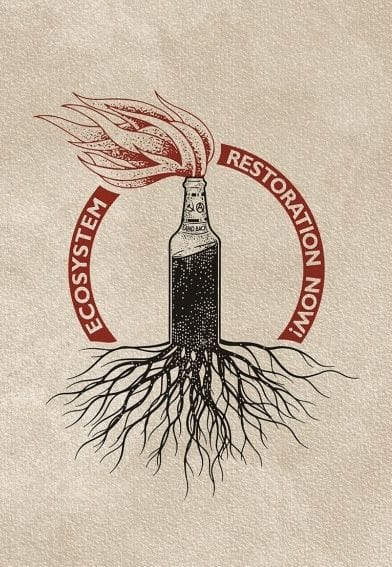
Green economy was developed initially in the 60s-70s as a system that prioritizes the needs of our planet over the needs of the market. Nonetheless, with the rise of neoliberalism and the incorporation of green economy within the neoliberal system, the core purpose shifted from a system that prioritizes the needs of our planet to one that tries to include a green approach within a system dominated by neoliberalism and overconsumption.
Nowadays, green economy values the economic needs of the Global North and multinational companies over a sustainable system that takes into consideration the needs of the Global South and its population. In fact, under the name of “green economy,” multinational firms, such as Nestlé, extract resources illegally, leaving native people with nothing left. This is the case for the natives in Canada. Many of the native population living in Canada often find themselves with no running water due to the mass extraction of water that leads to groundwater depletion. This is just one case among many, as the current application of the green economy model puts a sharp limit on the practical application of this theory. This economic model is a clear example of coloniality.
Developed by Latin American anti-colonial thinkers, coloniality is the concept that the Global South and most indigenous people and countries that were under colonialism were never able to get rid of the colonial regime. This theory indicates that colonialism is still present in our societies within infrastructures that prioritize the needs of the North over those of the South, such as in this case, where the economic system leads to the implementation of policies that are not adapted to the socio-economic infrastructure of the Global South. This results in a wrongful adaptation of green economy, which can cause more harm than good to those populations. The people of the Global South, as well as the native populations, find major difficulties in escaping coloniality, mostly for the following reason.
In the case studied, the economic systems adopted by international organizations such as the IMF do not take into consideration the nature of the economic systems present in the Global South, severely harming the local population. The green economy model was promoted by those international organizations, which contributed to major crises in the Global South. Let’s take Latin America as an example. In early 2010, the world was starting to get out of a period of severe recession. During this period, we were also witnessing the rise of social media and the concept of influencers. Little did we know that the combination of greater purchasing power as well as the development of the concept of influencers would take a toll on the Global South. In fact, the avocado trend came along with the deterioration of working conditions in Latin America, specifically in the agricultural sector.
Since the rise of big firms, along with the increasing need for exportation to meet market needs, many small farmers have had to sell their lands to multinational agronomic firms. This led to a rise in precarity among agriculture-based households, as many of them live off seasonal contracts. These contracts include minimal wages to allow multinational firms to maximize their gains from the industrial production, which is harmful to both people and biodiversity. As more than 50% of households face precarity, many of them are forced to send their kids to work to meet the essential needs of their households, creating a new crisis: child labor.
The reduction of green economy to the needs of the market showcases the limits of neoliberalism and how coloniality remains within economic systems as well as international organizations.